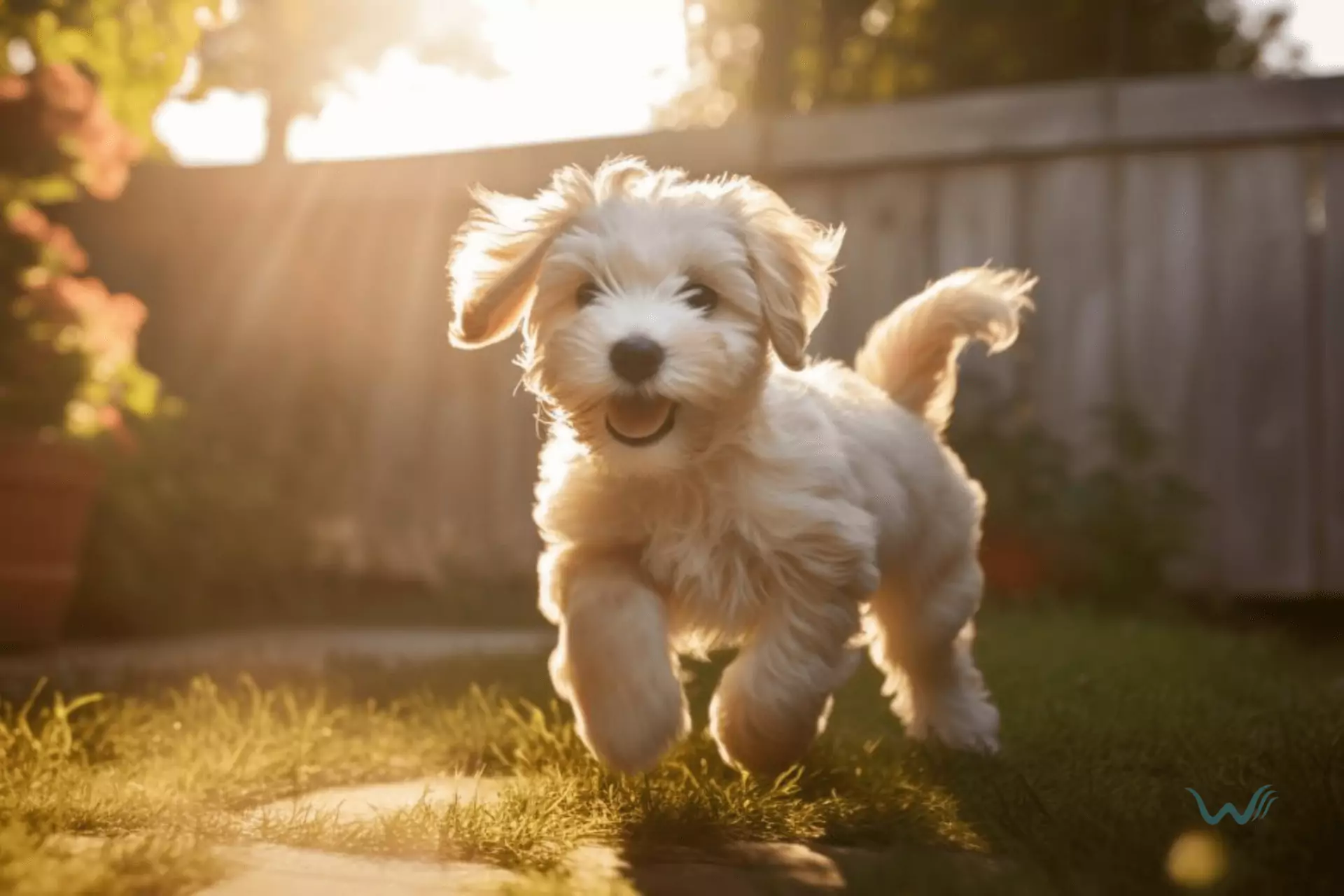

Using Positive Reinforcement Methods For Housebreaking Puppies
by Tayyaba Amir
Last updated: April 22, 2024
Verified and Approved by: Ellen Ernst
Fact Checked

Are you a proud new puppy parent? Congratulations! It’s an exciting and rewarding experience to bring a furry friend into your home. However, one of the biggest challenges of puppy ownership is housebreaking. No worries though, because in this article, we’ll guide you through the process using positive reinforcement methods that will make the journey enjoyable for both you and your little pup.
Imagine a home filled with joy, laughter, and a well-behaved puppy who knows exactly where to go potty. With the power of positive reinforcement training, you can create this picture-perfect scenario. Positive reinforcement is a training technique that focuses on rewarding good behavior rather than punishing bad behavior. By using this method, you’ll be able to teach your puppy the right place to do their business while building a strong bond based on trust and respect.
Key Takeaways
- Reinforce positive behavior and provide consistent guidance to address accidents inside the house.
- Use treats and praise as positive reinforcement methods.
- Establish a regular schedule for bathroom breaks and take the puppy outside frequently.
- Make the crate a positive and comfortable space, gradually increasing crate time, and providing mental and physical stimulation.
Understanding Positive Reinforcement Training
Positive reinforcement training is a method that focuses on rewarding desired behaviors rather than punishing unwanted ones. It’s all about using positive reinforcement, such as treats, praise, and playtime, to encourage your puppy to repeat good behaviors. This approach not only helps in housebreaking your furry friend but also strengthens the bond between you and your pup.
When you use positive reinforcement training, you become a master of motivation for your little pup. You have the power to make them feel loved, appreciated, and rewarded for their efforts. By rewarding good behavior, you create a positive association in your puppy’s mind, making them more likely to repeat that behavior in the future. It’s a win-win situation where your puppy gets the treat or praise they love, and you get a well-behaved and housebroken pet.
In this delightful journey of positive reinforcement training, you become the guiding light for your puppy. Your subconscious desire to serve others aligns perfectly with this method of training. You are not only helping your puppy learn essential skills but also providing them with love, care, and a sense of belonging. So, embrace the power of positive reinforcement and watch your puppy thrive as they become the well-behaved, housebroken companion you’ve always dreamed of.
Establishing a Routine for Housebreaking
Establishing a consistent schedule for your furry friend’s potty training journey can bring a sense of structure and progress to both of your lives. Creating a routine helps your puppy understand when it’s time to go outside and reduces the likelihood of accidents in the house. Here are three tips to help you establish a routine for housebreaking:
- Set a specific time for bathroom breaks: Determine the times when your puppy is most likely to need to go potty, such as after meals, after waking up from a nap, or after playtime. Take your puppy outside to the designated potty area at these specific times to reinforce the routine.
- Use cues to communicate: Teach your puppy a specific command or cue, such as “go potty” or “do your business,” that you can use every time you take them outside. Consistently using the same cue will help your puppy associate it with going potty and reinforce the desired behavior.
- Reward and praise: When your puppy successfully goes potty outside, provide immediate praise and a small treat as a reward. Positive reinforcement is a powerful motivator for puppies and helps them understand that going potty outside is good behavior. Be consistent with your rewards and praise to reinforce the routine.
By establishing a routine for housebreaking, you’re not only helping your puppy learn where and when to go potty, but you’re also providing them with a sense of security and predictability. This routine can bring structure to your lives and make the potty training journey smoother and more enjoyable for both of you.
Rewarding Good Behavior
When you’re teaching your furry friend the ropes of potty training, imagine yourself as a guiding lighthouse, shining a beacon of reward for their good behavior. Positive reinforcement is a powerful tool in housebreaking puppies, as it not only motivates them to repeat the desired behavior but also strengthens the bond between you and your pet. By rewarding your puppy’s good behavior, you are showing them that their actions are valued and appreciated. This encourages them to continue behaving in a way that pleases you, making the housebreaking process smoother and more enjoyable for both of you.
To effectively use positive reinforcement, it’s important to choose rewards that your puppy finds highly motivating. This could be a special treat, a favorite toy, or even a play session with you. As you reward your puppy, make sure to use verbal praise and physical affection as well. This combination of rewards helps to reinforce the positive behavior and communicate your satisfaction to your puppy.
In order to make the rewards even more impactful, it’s helpful to use a consistent cue or command when your puppy exhibits the desired behavior. For example, when your puppy successfully goes potty outside, you can use a phrase like “Good job!” or “Well done!” in a cheerful and enthusiastic tone. This helps your puppy associate the cue with the reward, making it easier for them to understand what behavior is being rewarded.
Here is a table to help you understand the key components of using positive reinforcement for housebreaking:
| Key Component | Description |
|---|---|
| Choose Motivating Rewards | Select rewards that your puppy finds highly motivating, such as treats or toys. |
| Use Verbal Praise and Physical Affection | Combine rewards with verbal praise and physical affection to reinforce the positive behavior. |
| Use Consistent Cues or Commands | Use a consistent cue or command when your puppy exhibits the desired behavior to help them understand what behavior is being rewarded. |
Remember, the goal of positive reinforcement is to create a positive association between your puppy’s good behavior and the rewards they receive. By being consistent and patient, you can effectively housebreak your puppy while building a strong and loving bond with them.
Consistency is Key
Consistency is important when it comes to successfully training your furry friend to use the bathroom outside. Dogs thrive on routine and structure, and housebreaking is no exception. By being consistent with your training methods and expectations, you’re setting your puppy up for success and making the process much easier for both of you.
Here are a few reasons why consistency is key:
- Establishing a routine: Dogs are creatures of habit, and they quickly learn to associate certain cues with specific actions. By sticking to a consistent routine of taking your puppy outside at the same times every day, you’re teaching them when and where they should go to the bathroom. This helps them develop a strong association between going outside and relieving themselves, making it easier for them to understand and replicate the behavior.
- Building trust and confidence: Consistency in your training methods helps build trust and confidence in your puppy. When they know what to expect from you, they feel secure and are more likely to follow your instructions. This trust and confidence play an important role in their ability to learn and succeed in their housebreaking efforts.
- Preventing confusion: Inconsistency can lead to confusion for your puppy. If you sometimes allow them to go inside the house and other times insist they go outside, they won’t understand what is expected of them. By consistently reinforcing the desired behavior of going outside, you eliminate any confusion and make it clear what is acceptable.
Troubleshooting Common Challenges
If you’re facing common challenges while housebreaking your puppy, don’t worry, you’re not alone. Housebreaking a puppy can be a challenging process, but with patience and the right techniques, you can overcome any obstacles that come your way. Here are some common challenges you may encounter and tips on how to troubleshoot them.
One common challenge is accidents inside the house. Puppies may have accidents due to a variety of reasons, such as not being fully housebroken, not understanding where they should go, or experiencing excitement or anxiety. To address this challenge, it’s important to reinforce positive behavior and provide consistent guidance. Use positive reinforcement methods, such as giving treats and praise when your puppy goes outside, to help them understand what is expected of them. Additionally, establish a regular schedule for bathroom breaks and take your puppy outside frequently, especially after meals or naps. By being consistent and patient, you can help your puppy learn where they should go and reduce the number of accidents inside the house.
Here is a table to help you troubleshoot common challenges during the housebreaking process:
| Challenge | Troubleshooting Tips | Emotional Response |
|---|---|---|
| Accidents inside the house | Reinforce positive behavior, establish a regular schedule for bathroom breaks, and be patient | Frustration, but also hope for improvement |
| Difficulty in crate training | Make the crate a positive and comfortable space, gradually increase crate time, and provide mental and physical stimulation | Frustration, but also determination to make crate training successful |
| Marking territory indoors | Clean accidents thoroughly, supervise your puppy closely, and use positive reinforcement to redirect their behavior | Frustration, but also motivation to prevent marking indoors |
| Fear or anxiety-related accidents | Create a calm and safe environment, provide reassurance and positive reinforcement, and consider seeking professional help if necessary | Empathy for the puppy’s fear or anxiety, and a desire to help them feel secure |
Housebreaking a puppy takes time and effort. It’s important to have patience and celebrate small victories along the way. By troubleshooting common challenges and using positive reinforcement methods, you can help your puppy become successfully housebroken and create a strong bond with them in the process.
Frequently Asked Questions
Can positive reinforcement training be used for housebreaking older dogs, or is it only effective for puppies?
Yes, positive reinforcement training can be used for housebreaking older dogs too! By rewarding good behavior and redirecting accidents, you can effectively teach them where to go. Remember, patience and consistency are key!
Are there any specific breeds that may require different or additional positive reinforcement methods for housebreaking?
When it comes to housebreaking, certain breeds may require different or additional positive reinforcement methods. Factors like size, temperament, and intelligence can play a role. It’s important to tailor your approach to meet their unique needs.
How long does it typically take for a puppy to be fully housebroken using positive reinforcement techniques?
On average, it takes about 4-6 months for a puppy to be fully housebroken using positive reinforcement techniques. Consistency, patience, and a clear routine will help speed up the process.
What should I do if my puppy has accidents indoors even after consistent positive reinforcement training?
If your puppy continues to have accidents indoors despite consistent positive reinforcement training, it may be helpful to examine other factors such as their diet, routine, and overall health. Consulting a veterinarian or professional dog trainer can provide valuable insights and guidance.
Can I use a combination of positive reinforcement and punishment methods for housebreaking, or is it better to solely rely on positive reinforcement?
It’s best to solely rely on positive reinforcement when housebreaking your puppy. Punishment methods can confuse and scare them, making the training process longer and more stressful. Stick to positive reinforcement for better results.
Certify Your Emotional Support Animal Today









